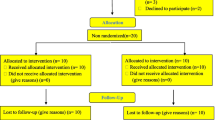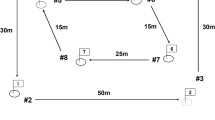Abstract
The gravitational pull of the moon on the earth is not the same in all phases of the lunar month, i.e. new moon (NM), first quarter (FQ), full moon (FM) and third quarter (TQ), and as a result the amplitude of tide differs in different phases. The gravitational pull of the moon may have effects on the fluid compartments of the human body and hence the cardiovascular system may be affected differentially in the different phases of the lunar month. In the present study resting heart rate (HR) and blood pressure (BP), physical fitness index (PFI), peak HR and BP immediately after step test, and recovery HR and BP after step test were measured during different phases of the lunar month in 76 male university students (age 23.7 ± 1.7 years). At rest, both systolic and mean arterial BP were ∼5 mmHg lower in NM and FM compared to FQ and TQ, but resting HR was not significantly different between phases. Further, peak HR and peak systolic BP after step test were lower (∼4 beat/min and ∼5 mmHg, respectively) in NM and FM compared to FQ and TQ. PFI was also higher (∼5) in NM and FM compared to FQ and TQ. Recovery of HR after step test was quicker in NM and FM compared to that of FQ and TQ. It appears from this study that gravitational pull of the moon may affect the cardiovascular functions of the human body. Moreover, the physical efficiency of humans is increased in NM and FM due to these altered cardiovascular regulations.



Similar content being viewed by others
References
Bevegard S, Holmgren A, Jonsson B (1960) The effect of body position on the circulation at rest and during exercise, with special reference to the influence on the stroke volume. Acta Physiol Scand 49:279–298
Biermann T, Estel D, Sperling W, Bleich S, Kornhuber J, Reulbach U (2005) Influence of lunar phases on suicide: the end of a myth? A population-based study. Chronobiol Int 22:1137–1143
Biopac Student Lab PRO Manual (2005) BIOPAC system, Inc. Aero Camino, Goleta, CA
Birch K, McLaren D, George K (2005) Instant notes: sports and exercise physiology, 1st edn. Garland Science/BIOS Scientific, UK, pp 75–94
Brouha L, Graybiel A, Health CW (1943) Step test: simple method of measuring physical fitness for hard muscular work in adult man. Rev Can Biol 2:86
Chakraborty U, Ghosh TK (2012) Autonomic neural activity in male human subjects during different phases of synodic period of moon. Biol Rhythm Res. doi:10.1080/09291016.2012.692257. Accessed 07 November 2012
Cutler WB, Schleidt WM, Friedmann E, Preti G, Stine R (1987) Lunar influences on the reproductive cycle in women. Hum Biol 59(6):959–972
Dunne FP, Barry DG, Ferriss JB, Grealy G, Murphy D (1991) Changes in blood pressure during the normal menstrual cycle. Clin Sci (Lond) 81:515–518
Ewing DJ (1978) Cardiovascular reflexes and autonomic neuropathy. Clin Sci Mol Med 55:321–327
Fahim M (2003) Cardiovascular sensory receptors and their regulatory mechanisms. Ind J Physiol Pharmacol 47(2):124–146
Fox EL, Billings CE, Bartels RL, Bason R, Mathews D (1973) Fitness standards for male college students. Int Z Angew Physiol 31:231–236
Freedman RR, Girgis R (2000) Effects of menstrual cycle and race on peripheral vascular α-adrenergic responsiveness. Hypertension 35:795–799
Guyton AC, Hall JE (2006) Text book of medical physiology, 11th edn. Elsvier Inc, Philadelphia, pp 291–306
Hale T (2003) Exercise physiology: a thematic approach. John Wiley & Sons Ltd, Chichester, pp 234–235
Kenney RA (1965) A modified pack test of physical fitness. Singap Med J 6(2):103–106
Kollerstrom N, Steffert B (2003) Sex difference in response to stress by lunar month: a pilot study of fours’ crisis-call frequency. BMC Psychiatry 3:20
Kothari CR (2004) Research methodology: methods and techniques, 2nd edn. New Age International (P) Ltd, New Delhi, pp 193–195
Kuwahara T, Yoshimitsu I, Miyako A, Yuki S, Narihiko K (2005) Effects of menstrual cycle and physical training on heat loss responses during dynamic exercise at moderate intensity in temperate environment. Am J Physiol Regul Integr Comp Physiol 288:R1347–R1353
Law SP (1986) The regulation of menstrual cycle and its relationship to the moon. Acta Obstet Gynecol Scand 65:45–48
Lieber AL, Sherin CR (1972) Homicides and the lunar cycle: toward a theory of lunar influence on human emotional disturbance. Am J Psychiatry 129:69–74
Martin SJ, Kelly IW, Saklofske DH (1992) Suicide and lunar cycles: a critical review over 28 years. Psychol Rep 71:529–532
Myers DE (1995) Gravitational effects of the period of high tides and the new moon on lunacy. J Emerg Med 13:529–532
Monkhouse FJ (1971) Principles of physical geography, 7th edn. University of London Press, London, pp 363–370
Morgan E (2001) The moon and life on earth. Earth Moon Planet 85–86:279–290
Pickering GP, Fellmann N, Morio B, Ritz P, Amonchot A, Vermorel M, Coudert J (1997) Effects of endurance training on the cardiovascular system and water compartments in elderly subjects. J Appl Physiol 83(4):1300–1306
Poliner LR, Dehmer GJ, Lewis SE, Parkey RW, Blomqvist CG, Willerson JT (1980) Left ventricular performance in normal subjects: a comparison of the responses to exercise in the upright and supine positions. Circulation 62:528–534
Polychronopoulos P, Argyriou AA, Sirrou V, Huliara V, Aplada M, Gourzis P, Economou A, Terzis E, Chroni E (2006) Lunar phases and seizure occurrence: just an ancient legend? Neurology 66:1442–1443
Raison CL, Klein HM, Steckler M (1999) The moon and madness reconsidered. J Affect Disord 53:99–106
Schafer JA, Varano SP, Jarvis JP, Cancino JM (2010) Bad moon on the rise? Lunar cycles and incidents of crime. J Crim Justice 38:359–367
Terra-Bustamante VC, Scorza CA, de Albuquerque M, Sakamoto AC, Machado HR, Arida RM, Cavalheiro EA, Scorza FA (2009) Does the lunar phases have an effect on sudden unexpected death in epilepsy? Epilepsy Behav 14(2):404–406
Thakur CP, Sharma D (1984) Full moon and crime. Brit Med J 289:1789–1791
Thakur CP, Sharma RN, Akhtar HS (1980) Full moon and poisoning. Brit Med J 281:1684
Tipton CM (2003) Exercise physiology: people and ideas. Oxford University Press Inc, New York, pp 98–137
Touitou Y, Portaluppi F, Smolensky MH, Rensing L (2004) Ethical principles and standards for the conduct of human and animal biological rhythm research. Chronobiol Int 21:161–170
Watkins J (1984) Step tests of cardiorespiratory fitness suitable for mass testing. Brit J Sports Med 18(2):84–89
Yvonneau M (1996) Views from Dordogne and the moon, on suicide. [Article in French] Encephale 22:52–57
Zimecki M (2006) The lunar cycle: effects on human and animal behavior and physiology. Postepy Hig Med Dosw 60:1–7
Acknowledgements
As part of the study was carried out in the Department of Human Physiology, Vidyasagar University, the authors would like to acknowledge this Department for use of its facilities.
Author information
Authors and Affiliations
Corresponding author
Rights and permissions
About this article
Cite this article
Chakraborty, U., Ghosh, T. A study on the physical fitness index, heart rate and blood pressure in different phases of lunar month on male human subjects. Int J Biometeorol 57, 769–774 (2013). https://doi.org/10.1007/s00484-012-0605-z
Received:
Revised:
Accepted:
Published:
Issue Date:
DOI: https://doi.org/10.1007/s00484-012-0605-z




